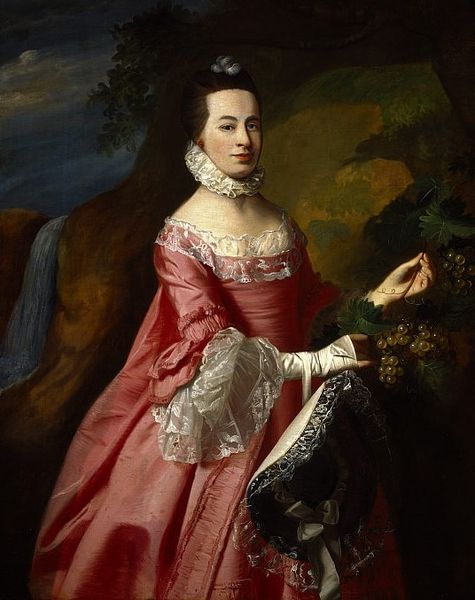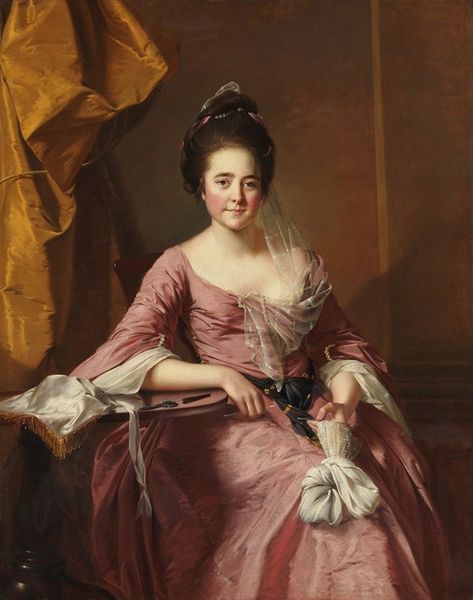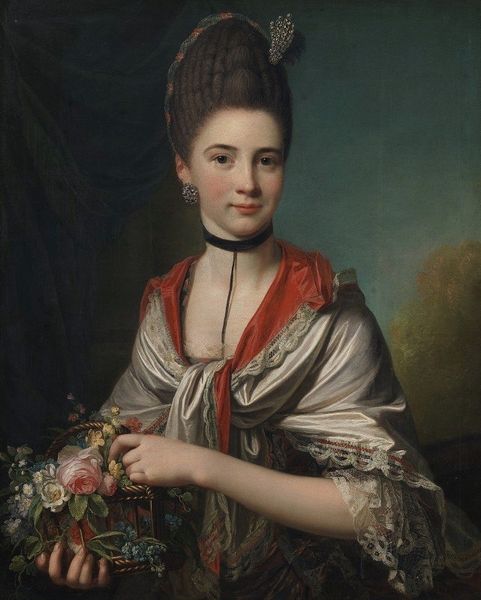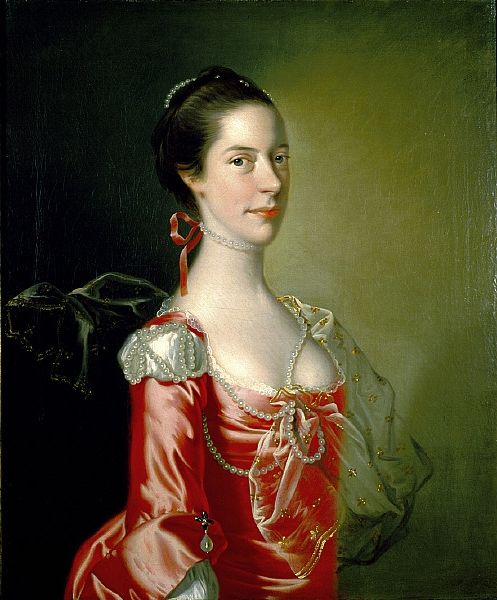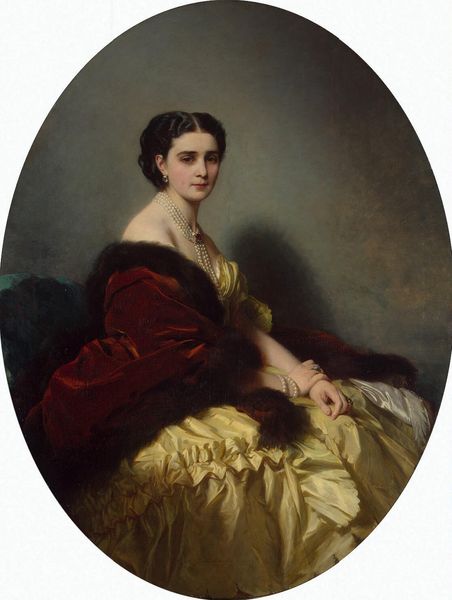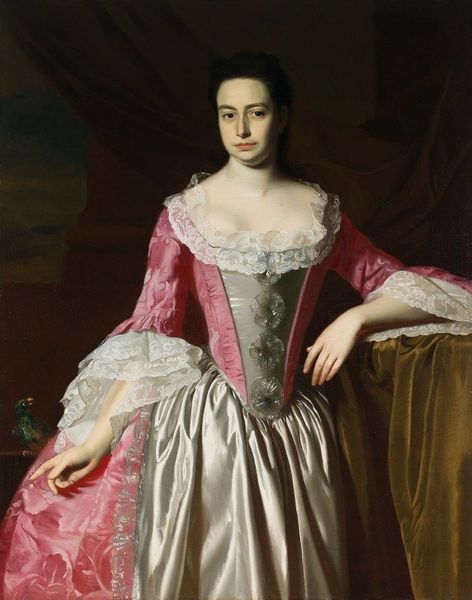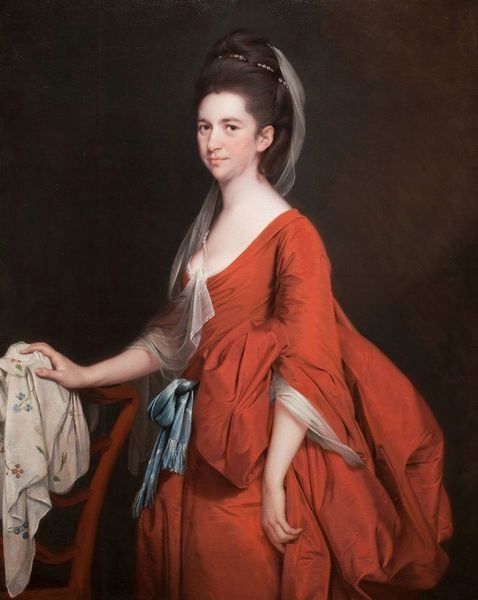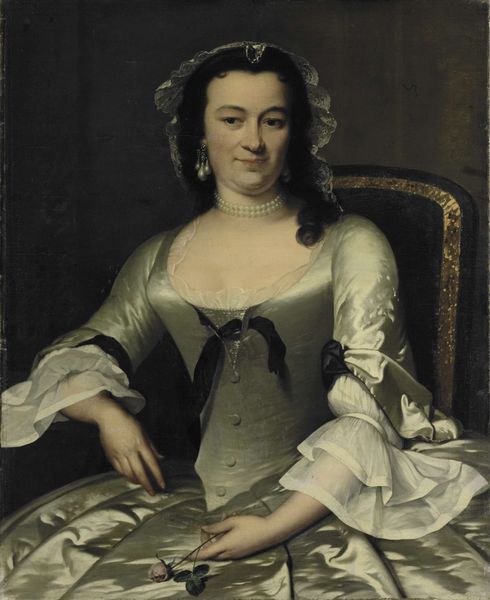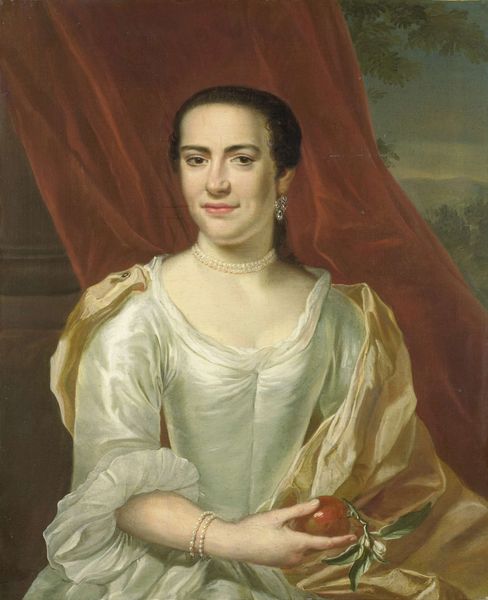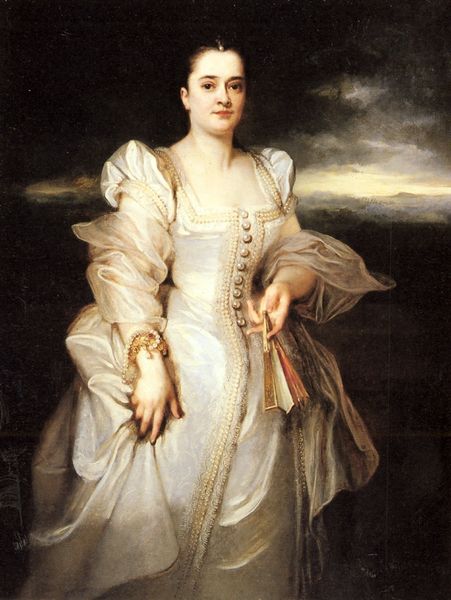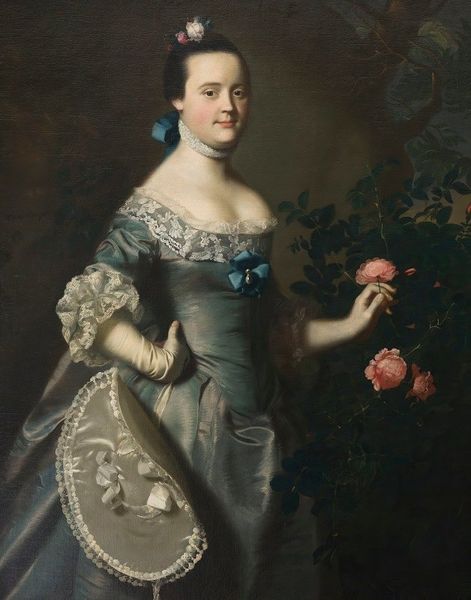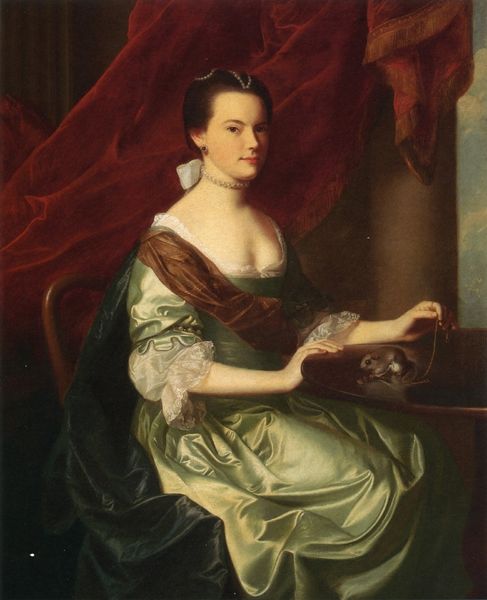
oil-paint
#
portrait
#
figurative
#
oil-paint
#
figuration
#
romanticism
#
genre-painting
#
history-painting
#
academic-art
Copyright: Public Domain: Artvee
Curator: Let's turn our attention to John Singleton Copley’s portrait, "Mrs. George Watson." Copley, working in the late 18th century, masterfully employs oil paint to capture the likeness and social standing of his sitter. Editor: Immediately striking is the intense, almost severe formality of this woman, despite the soft pinks and whites of her attire. It’s a curious juxtaposition. Curator: Indeed. Notice the precise brushwork, particularly in the rendering of the satin dress, with its rich folds and shimmering highlights. It speaks to Copley’s ambition to capture the material world with accuracy, but also his intention to evoke status and luxury through composition. The fabric flows diagonally from right to left in the artwork, which draws your eye into the visual of the woman's form and the stark background that highlights the contours of her face. Editor: But it’s more than just about the surface. Consider the pose, the deliberate placement of the vase – likely Delftware – and the sitter’s unwavering gaze. What statement is she making about her role and identity within the burgeoning merchant class? Is this simply a celebration of wealth, or a carefully constructed image intended to project authority in a world where women had limited agency? She does not seem overly comfortable, the pose is rather uptight with her chest out and arms folded. Curator: Her clothing acts as an integral signifier. The romantic colors are muted, however, in such a way that signals class status above all else; notice the fine lace trim around the elbow-length sleeves of her gown and square neckline. The symbolism operates on multiple levels here: the flower is placed next to Mrs. Watson's head, a common motif that draws parallels to a beautiful yet unobtainable nature, not unlike her as a wealthy young woman during the era. Editor: Precisely, and consider the societal pressures and expectations imposed on women of her stature. The pressure to marry well, maintain a household, and uphold a certain moral standard. Those ribbons act almost as the restraints within societal decorum. Does Copley’s rendering implicitly critique these constraints even as it seemingly reinforces them? How can we read the details of Copley's form as something that holds historical significance? Curator: That tension, between the display of wealth and the subtle anxieties beneath the surface, is what makes Copley’s work so compelling. The semiotics of academic art as related to feminine constraints is ever present when you can read the visual codes so clearly. Editor: It provides a framework for understanding both the individual and the society that shaped her, and also that which framed the context in which the artwork came into being. Curator: A very valuable consideration. Thanks for joining me in analyzing this piece together. Editor: Of course, my pleasure!
Comments
No comments
Be the first to comment and join the conversation on the ultimate creative platform.


